An experiment in bioextraction
In 2015, Georgica Pond’s water quality was poor. It had some of the worst blue-green algae blooms in Suffolk County along with low dissolved oxygen and fish kills. Friends of Georgica Pond, in partnership with the East Hampton Town Trustees and Stony Brook University started harvesting aquatic vegetation from the Pond and taking other measures to improve the water quality. This summer, there was no blue-green algae bloom and all other water quality parameters remained good. This newsletter describes the work involved in employing the aquatic weed harvester.
Rationale
After the Gobler Lab of Stony Brook University documented that major macrophyte (non-microscopic plants and algae) blooms were followed by cyanobacteria (blue green algae) blooms, an immediate approach to remedy the situation was developed. Plant growth requires nitrogen, phosphorous, potassium and many other micronutrients as well as sunshine. When plants complete their growing cycle, they decompose, re-releasing nutrients back into the pond. As a eutrophic* pond, there is a super abundance of available nutrients for plant growth, so adding to it either by decomposition, fertilizer or wastewater is not good. We want fewer nutrients entering the pond. The concept of using the plants themselves to “bioextract” the nutrients is of great interest, as evidenced by the growth of kelp farming in marine ecosystems.
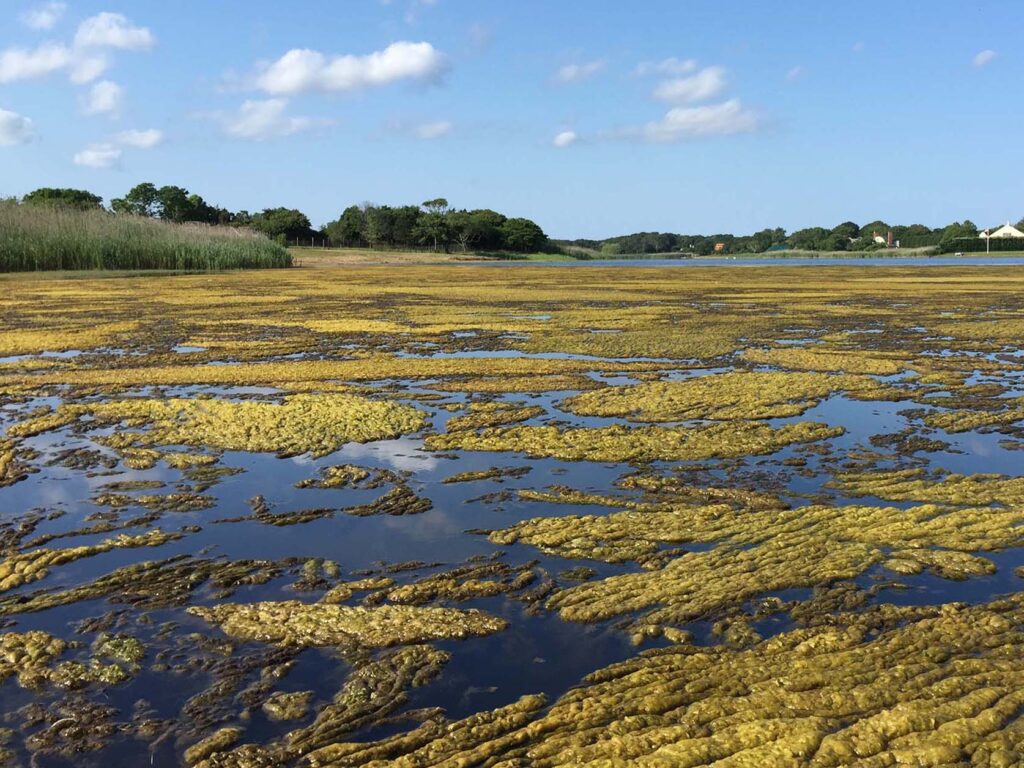
Permits
Operating a harvester is a complex and large undertaking involving many agencies and participants. First is the NYS DEC which originally permitted the project on a ‘special scientific license to collect’. Once the effectiveness of the harvester was demonstrated, the NYS DEC and the East Hampton Town Board granted a 5-year permit to harvest. The Town Trustees have issued annual approvals.
The Team
Leading the scientific analysis and design is Dr. Christopher Gobler of Stony Brook University’s School of Marine & Atmospheric Sciences (SoMAS). Critical before and after harvester monitoring to detect any impacts of the harvester is headed up by Dr. Brad Peterson, marine biologist also of SoMAS . Last but not least is Aquatic Solutions East, a local company which owns and operates the harvester.
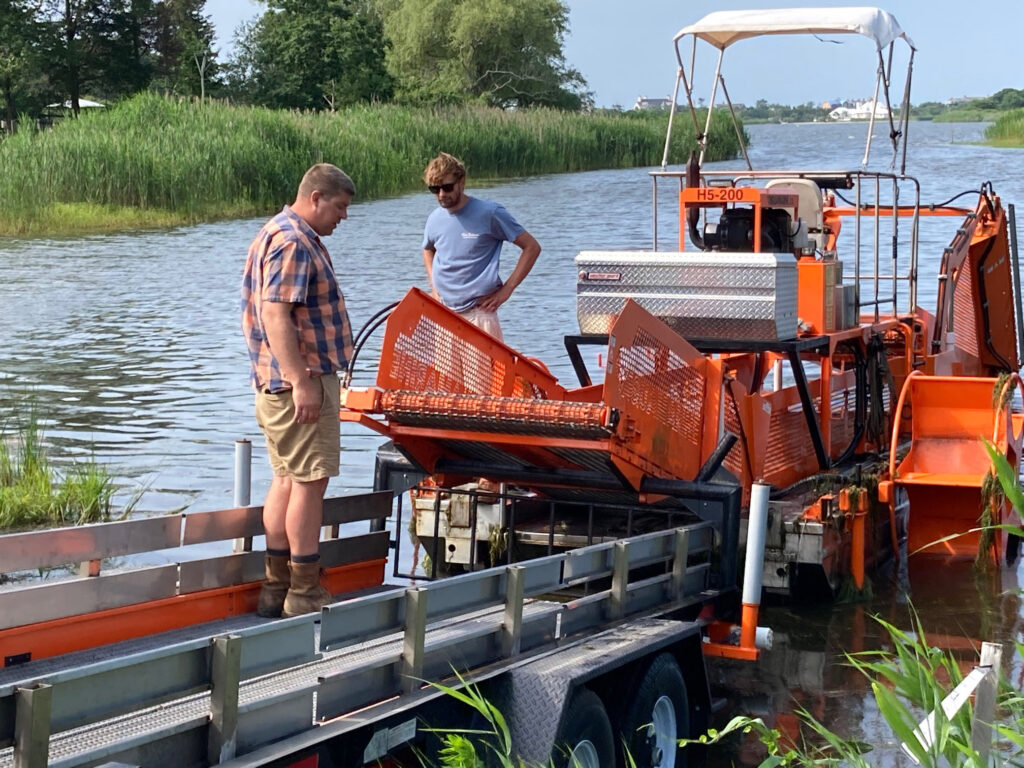
Monitoring
In order to ensure that the harvester is not having an adverse impact on the pond, careful bi-weekly, bi-catch monitoring of organisms and pre and post monitoring of the pond and control areas are sampled. The pre and post-harvest monitoring is conducted in June and September. The by-catch counts are conducted in July and August.
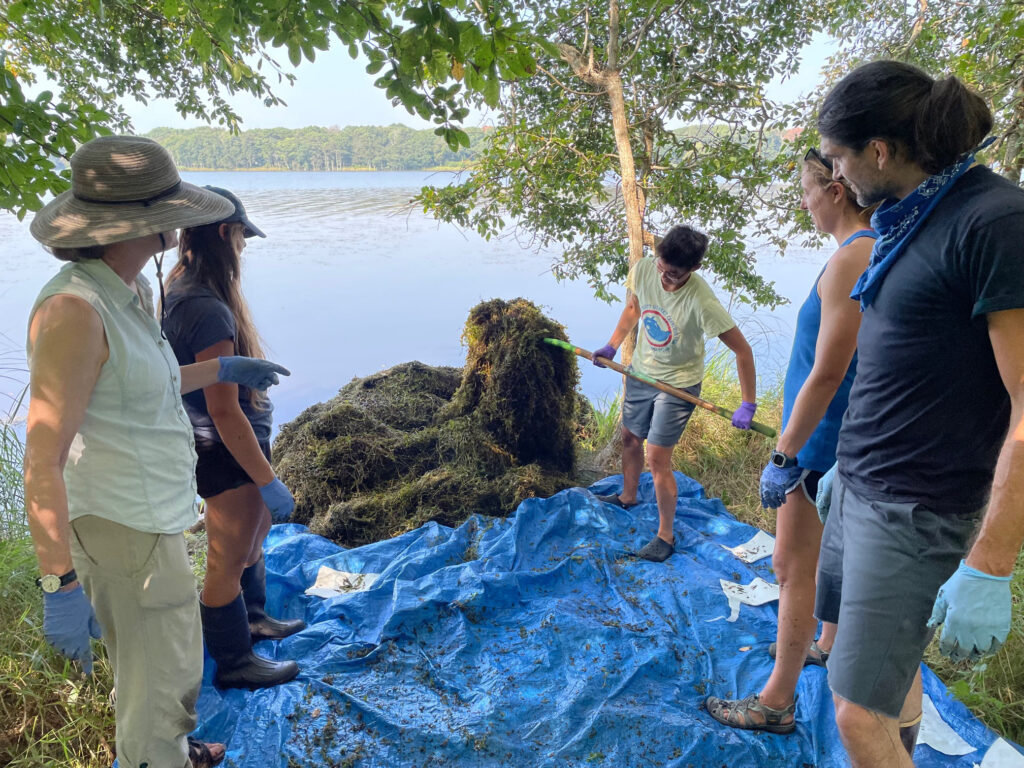
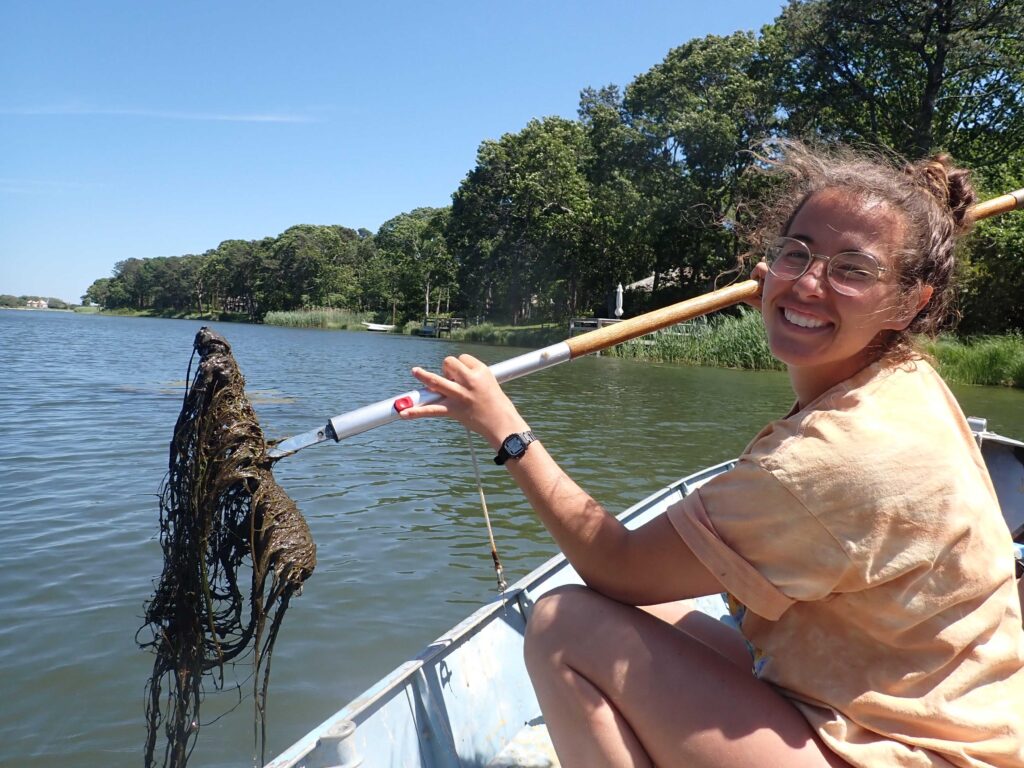
The Results
During years when the harvester is in operation, there has been a decrease in harmful algal blooms and an increase in dissolved oxygen, both key indicators of improved water quality. The amount of nutrients, in this case nitrogen and phosphorous, that are bioextracted is significant.
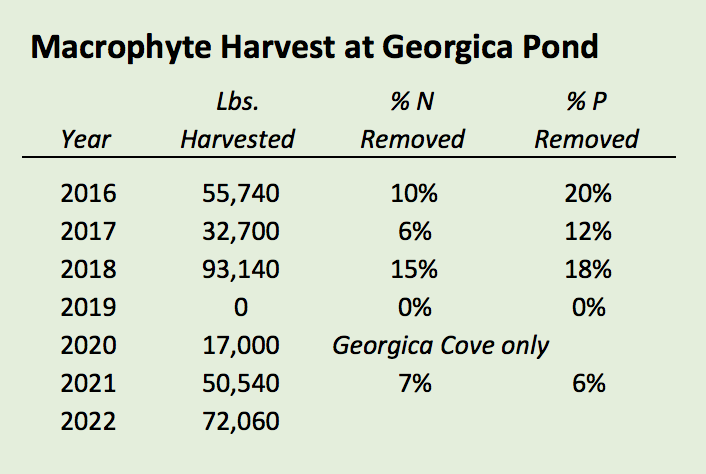
In addition to improving the water quality of the pond, we are learning a lot about the pond’s aquatic life. Georgica Pond has always been known as a productive blue claw crab nursery and was important to local baymen for bait fish and other commercially important species. A diversity of aquatic species that can tolerate a wide range of salinities is one of the things that makes Georgica Pond special. Rainwater Killifish, Fourspined Sticklebacks that thrive in brackish water can be found alongside freshwater snapping turtles and marine species such as Atlantic Silversides.
Thanks to support from our members, we are able to operate the aquatic weed harvester at Georgica Pond. Reducing nitrogen inputs to the pond is key to the success of preserving the Georgica Pond ecosystem and we encourage all people living on or near the pond to upgrade their septic system and eliminate their use of synthetic, nitrogen-rich fertilizer. If everyone does that, we may not need the harvester in the future.
*Eutrophic—A waterbody enriched with nutrients which increases the amount of plant & algal growth.
